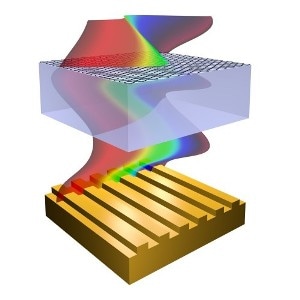Nov 23 2016
A team of researchers at The University of Manchester have formulated a new technique of developing optoelectronic circuits using graphene and other 2D materials that are comparatively smaller than their existing counterparts.
 Credit: The University of Manchester
Credit: The University of Manchester
Optoelectronics, the technology that uses pulses of light instead of traditional electrical signals, is fundamental for telecommunication networks.
Modulators are crucial in optoelectronic circuits as they manipulate the signals passed via optoelectronic devices. Earlier attempts to produce hybrid modulators integrating graphene have yielded promising but limited results.
The research findings have been published in Nature Communications. The team led by Professor Sasha Grigorenko have demonstrated it is possible to integrate graphene, its sister material boron nitride, and a nanoscale gold grating to develop a new class of optical modulator.
Graphene is the world’s first 2D material, measuring only one atom thick yet 200 times stronger than steel, impermeable to water and more conductive than copper. Since then a whole group of 2D materials have been discovered and are currently being used together in order to customize materials to mach specific requirements.
This could pave the way for faster circuits, which is the main selling point of using light instead of electrical signals. But probably the bigger result from this work is that it could allow for a dramatic reduction in the size of these circuits. It is rare to have a modulator which both creates a strong modulation effect and is really tiny.
Philip Thomas, Graphene NOWNANO PhD student
The planned device can effectively process data using light in a similar manner as computers process data using electrons.
It is unprecedented to achieve light modulation in such a wide wavelength range - from visible to infrared light in which human eye, night vision goggles and thermal imaging operate - using just one simple design.
Professor Sasha Grigorenko